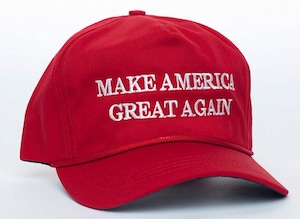Deregulation and common sense can make America great again
The economy turns on the wheels of “making things,” on manufacturing, which is the basis for a strong middle class because of the opportunities manufacturing offers.
December 22, 2016

 As the new year approaches, we are also four weeks from a new administration that, this time around, offers real hope for some badly needed change. The Rust Belt knows it. All of us—whether we earn our keep by making words or making things—know it.
As the new year approaches, we are also four weeks from a new administration that, this time around, offers real hope for some badly needed change. The Rust Belt knows it. All of us—whether we earn our keep by making words or making things—know it.
Already we’re seeing new life coming into the incoming Trump Administration, with his picks for Cabinet positions: People who are knowledgeable about business, who are successful in business, who understand global trade and the impact of bad negotiations. The economy turns on the wheels of making things, on manufacturing, which is the basis for a strong middle class because of the opportunities manufacturing offers.
Bret Stephens notes in a Wall Street Journal editorial, "Doomed to Stagnate?" (you should really read the entire piece), that the regulatory environment has become ponderous and burdensome: Eight years ago, getting a construction permit took 40 days; today it’s 81 days. No wonder the folks at the National Association of Home Builders are happy about the nomination of Oklahoma Attorney General Scott Pruitt as EPA administrator, hoping that the permitting process will be streamlined back to the pre-Obama days. Surely with all the information technology we have, submitting an application and getting approval should be pretty simple.
Every year, the World Bank issues a survey that ranks countries according to their business friendliness. Stephens provides a peek into that list: “When President Obama took office in 2009, the U.S. ranked third in the overall index, just behind Singapore and New Zealand. It has since fallen to eighth place. . . . When President Bush left office, it took 300 days to enforce a contract. Today: 420. As for registering property, the cost has nearly quintupled since 2009, to 2.4% of property value from 0.5%.” Stephens asks if we in the United States are “doomed to the long-term economic stagnation that afflicts Japan and Europe?”
The regulatory environment has stifled small businesses and made it more costly for even the largest corporations to do business. Stephens points out that the things we hear about in the business news every day, such as the Affordable Care Act mandate, are just the tip of the iceberg. There are thousands of regulations that we don’t hear about: For example, government contractors “must, according to recent Labor Department regulations, establish a goal of having 7% of their workforce be disabled.” To achieve this goal, Stephens cites the rule’s compliance method: “Contractors must conduct an annual utilization analysis and assessment of problem areas, and establish specific action-oriented programs to address any identified problems.”
Stephens cites a half-dozen other examples, but those of you who are in business know all too well the burdensome rules that make doing business increasingly difficult, reducing our annual GDP growth rate by 0.8%, according to the Mercatus Center at George Mason University.
Some people are crying that deregulation in many of the various agencies that all but run manufacturing in the United States will be harmful to the country. They worry that without rules to regulate everything from how a company can hire and fire and pay employees to providing benefits, we will roll the clock back to the 1950s. Manufacturing has come a long way since the days of Love Canal and the Cuyahoga River, near Cleveland, which caught on fire because of the flammable chemicals that a paint maker was dumping into it. I was living in the Cleveland area when that happened, and the incident became a longstanding, but not very funny, joke.
Today, most, if not all, U.S. manufacturers understand the need for clean air, clean water and the proper disposal of waste materials, and they are proactive in keeping our environment clean and safe. Sure, accidents still happen but most are merely accidents, not purposeful dumping. Maybe it’s time for the nanny state to let us in manufacturing be the adults that we’ve become and and lighten up on the multitude of minutiae that fills volumes with rules no one could ever hope to enforce.
I can’t recall who said—Yogi Berra, maybe—that “common sense isn’t very common anymore.” Perhaps the real hope is that common sense will prevail over the next four years, and things will change for the better and manufacturing will become the path to a bright future for young people who can see the opportunities it offers. Perhaps the labor participation rate, which is the lowest since before World War II, will begin to recover as those who are able to work but have dropped out will return to the job market and help bridge the skills gap. Perhaps instead of a nation of part-timers, we’ll have a country where people can work full-time and have company-sponsored healthcare via HSAs and real affordable insurance.
If you want to see how it can work, read Jon Huntsman Sr.’s autobiography, Barefoot to Billionaire: Reflections on a Life’s Work and Promise to Cure Cancer. It’s a great example of how his innovations in the plastics industry provided the pathway to success.
The views expressed are solely the author’s and do not necessarily reflect those of PlasticsToday or UBM.
About the Author(s)
You May Also Like




